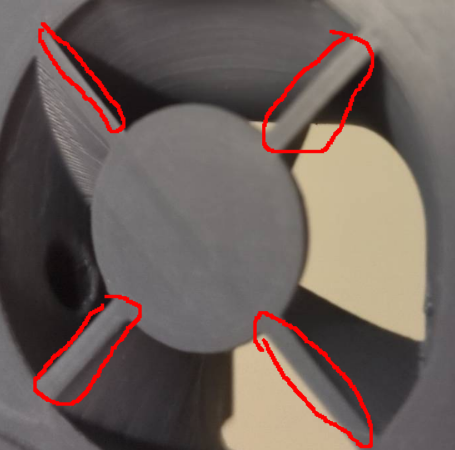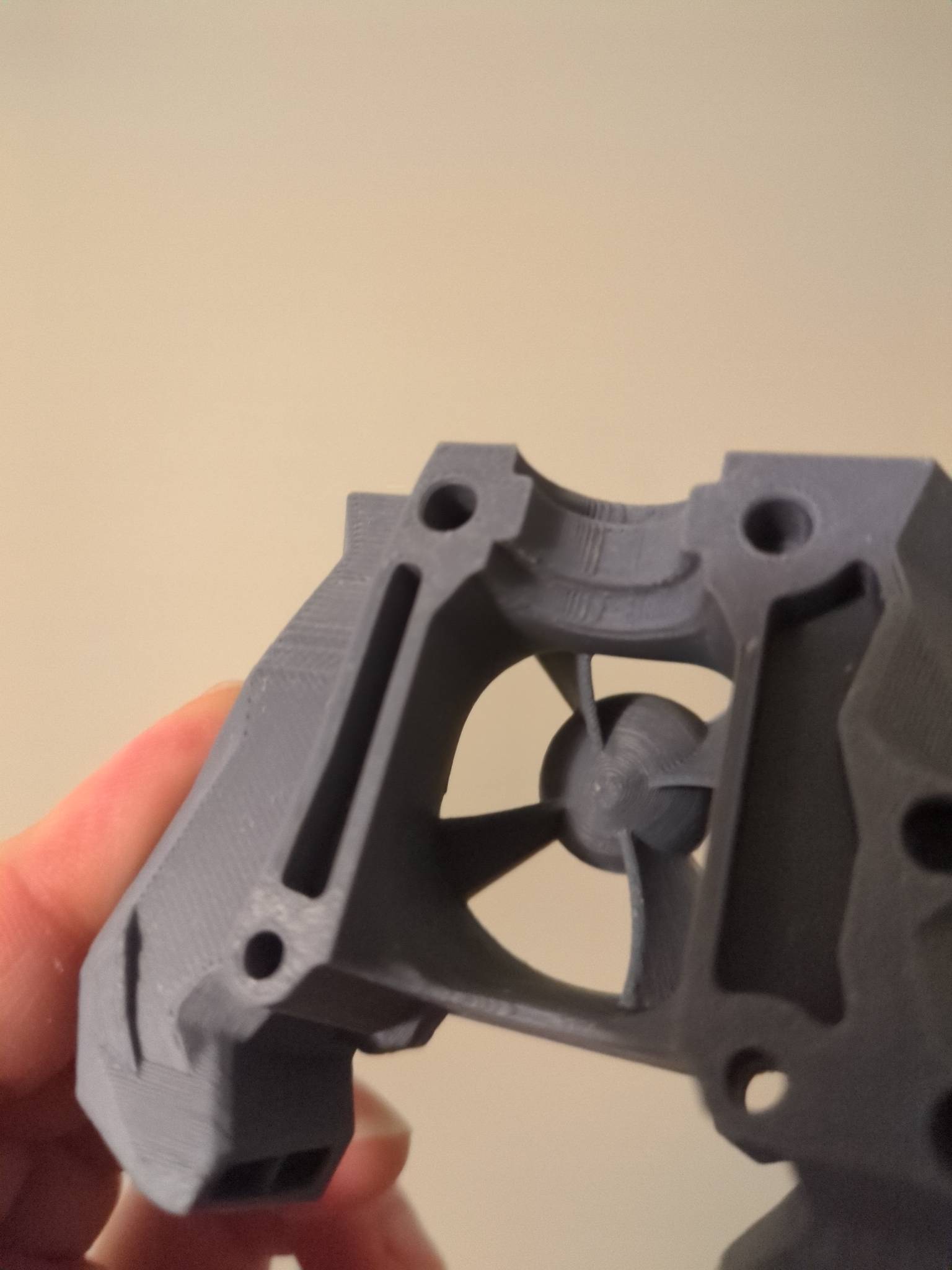
just to clarify, you're talking about the bits whose ends are marked in red circles?
They're called stators. In a ducted fan (or similar) they're used to control the air flow coming off the fan. Usually, it's fairly turbulent airflow, with a bit of spinning going on. the stators are used to make that turblent flow more smooth and laminar.
I'm not sure why they have it on the Voron- I assume that's the fan that cools the hot end heat sink, in which case turbulent flow is not a problem at all. It could be to reduce noise and act as a fan guard, though. Or it could just be cosmetic. probably bit of the last two.

